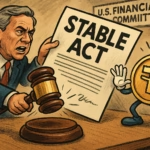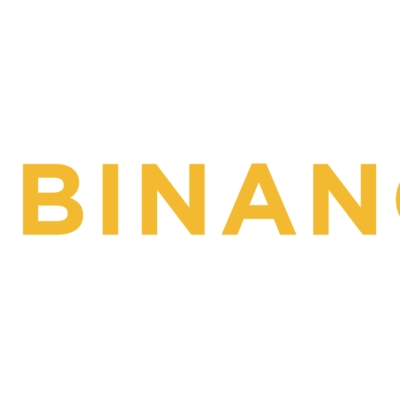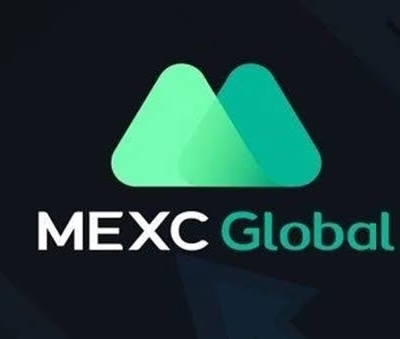BitMEX Founder Says Circle’s Listing Marks the Start of ‘Stablecoin Mania,’ Urges Traders to Treat New Listings Like a ‘Hot Potato’
Arthur Hayes, co-founder of BitMEX, has issued a strong warning to investors following the successful initial public offering (IPO) of Circle (CRCL), the issuer of USDC, saying the event could mark the start of a wave of overhyped and doomed stablecoin IPOs.
In a blog post published on Monday, Hayes predicted that many companies aiming to emulate Circle’s public debut will be heavily overvalued, have limited paths to success, and may ultimately fail due to restricted distribution channels.
“The listing marks the beginning, not the end of this cycle’s stablecoin mania,” Hayes wrote.
“Assume the Position” is a discussion on the stablecoin mania brewing in public stock markets. If you want your bowel movements to stay regular, read on.https://t.co/ceiUbuufAe pic.twitter.com/aapX8nv6Dm
— Arthur Hayes (@CryptoHayes) June 16, 2025
Investors Should ‘Trade Like a Hot Potato’
Hayes argued that the next wave of stablecoin IPOs will likely consist of “Circle copycats”—firms that rely heavily on financial engineering, leverage, and showmanship to attract investor capital.
“Trade this shit like you would a hot potato,” he said, warning that retail investors and institutions alike could get swept up in a bubble that may not be sustainable.
However, Hayes stopped short of recommending short positions, cautioning that the current pro-crypto sentiment in the U.S. and the bullish “stablecoin mania” narrative could drive prices higher before any correction sets in.
“These new stocks will rip the faces off of shorts,” he wrote.
Circle Shares Soar Post-IPO Despite Valuation Concerns
Circle, which completed its IPO on June 5, has seen its stock price climb over 80%, hitting an all-time high of nearly $165 on June 16, according to Google Finance. Hayes acknowledged the momentum but called the company “insanely overvalued,” pointing out that 50% of its interest income is shared with Coinbase.
“Its price will continue levitating… for now,” Hayes added, referencing the broader investor enthusiasm surrounding regulated stablecoin issuers.
Distribution Is the Real Bottleneck, Hayes Says
Hayes argued that the key challenge for new stablecoin companies is distribution, not technology or compliance.
He identified only three viable distribution channels:
-
Crypto exchanges
-
Web2 social media platforms
-
Legacy banks
Without access to at least one of these, new stablecoin entrants have no chance of succeeding, Hayes said. Existing players already dominate the exchange space, and Web2 companies like Meta and banks like JPMorgan are developing their own stablecoin infrastructure.
“New entrants will either pay massive fees to be listed on exchanges or offer unsustainable yields to attract deposits,” he noted.
“Meanwhile, social media platforms and banks will simply create their own stablecoins and shut out third-party issuers.”
“Suited-Up Clowns” and the Coming Bubble
Hayes didn’t mince words when describing what he sees as inevitable overvaluation and poor fundamentals.
“It will be hilarious to watch the suited-up clowns that are able to hoodwink the investing public into investing in their dogshit companies,” he wrote.
He believes that most of these firms will attract billions from eager investors, only to collapse when the distribution challenge becomes clear and revenues fall short.
U.S. Stablecoin Legislation Could Fuel the Frenzy
The warning comes as the U.S. Senate prepares to vote on the GENIUS Act (Guiding and Establishing National Innovation for U.S. Stablecoins) on June 17. If passed, it would establish a regulatory framework for stablecoin issuance, further fueling institutional interest.
“Stablecoin regulation in the U.S. will kick off a wave of new stablecoins in the U.S. and all over the world,” said Chainlink co-founder Sergey Nazarov on Tuesday.
Hayes agrees that regulatory clarity will spark new entrants — but he believes most will be ill-prepared to compete with the entrenched infrastructure and distribution networks of existing issuers.
What Traders Should Watch For
While Hayes warns of long-term risks, he doesn’t suggest investors avoid the sector altogether. Rather, he urges short-term opportunism and disciplined trading.
Key takeaways from his advice include:
-
Do not short new stablecoin IPOs outright, especially early on
-
Watch for overvaluation relative to actual distribution capabilities
-
Sell positions quickly once the initial hype starts to fade
In essence, treat new stablecoin stocks like momentum trades, not long-term investments — at least until the dust settles.
Conclusion
Arthur Hayes’ critique of the incoming wave of stablecoin IPOs serves as a cautionary tale for crypto investors and traditional market participants alike. While Circle’s successful listing may have opened the floodgates, Hayes believes that most imitators lack the infrastructure and distribution networks needed to compete.
With stablecoin regulation advancing and new entrants likely to flood the market, Hayes urges traders to act with skepticism and agility — and to treat each new IPO as a short-lived trading opportunity rather than a long-term bet.
“We’ve seen this movie before,” Hayes concluded. “Just remember: not every stablecoin company is Circle — and not every crypto stock is worth holding.”












